The Consequences of an Over Fertilized Lawn: What Every Homeowner Should Know
By HeyHome • June 13, 2023
Key Takeaways
- Over fertilization of lawns can cause serious damage but is preventable and fixable.
- Identifying symptoms early, such as fertilizer burn, helps mitigate damage.
- The immediate response to over fertilization involves removing excess fertilizer and watering the lawn thoroughly.
- Long-term recovery strategies include adjusting fertilization routines and implementing balanced lawn care.
- Preventing over fertilization involves using fertilizers correctly and creating an effective fertilization schedule.
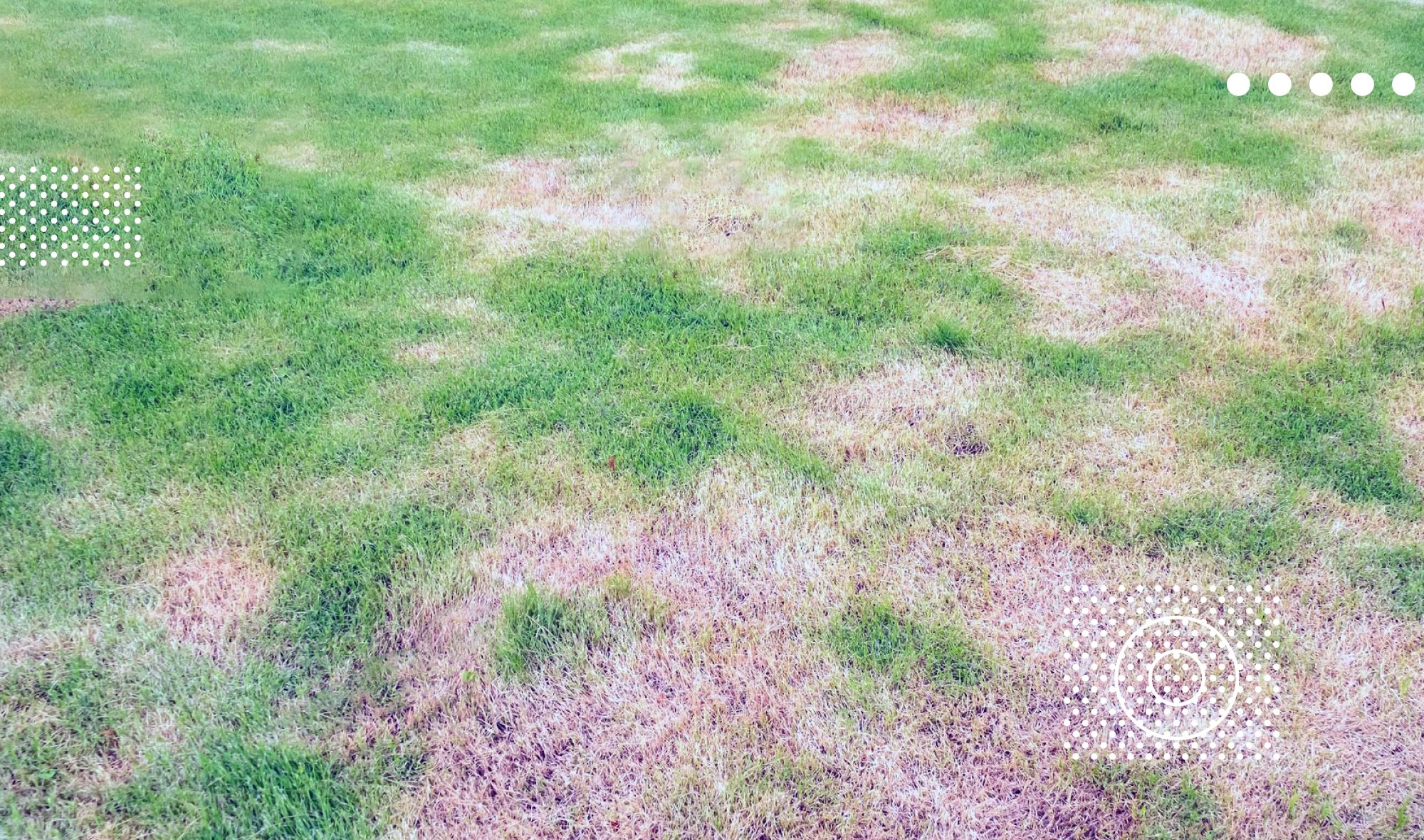
Taking care of a lawn can often feel like an art. Just as a painter uses the right mix of colors, a gardener has to blend the perfect amount of water, sunlight, and fertilizer to maintain that vibrant, emerald carpet we call a lawn. But what happens when you give your lawn too much of one ingredient – in this case, fertilizer? This is a surprisingly common issue for homeowners, who are often left scratching their heads over why their green haven has suddenly sprouted brown or yellow patches, or why the once lush grass blades have become discolored and brittle.
The answer, more often than not, lies in over fertilization. The same substance that is meant to nourish your lawn can turn into its bane if used excessively. In this post, we're going to unravel the mysteries of an over fertilized lawn, explore how you can identify and rectify this issue, and equip you with the knowledge to avoid over fertilizing in the future. Welcome to the world of lawn care - a world where less can often mean more.
Before we delve into the specifics, it's important to understand the role of fertilizers in lawn care. You may be surprised to learn that even the healthiest soil doesn't contain all the essential nutrients that your grass needs to thrive. That's where lawn fertilizers come in – these nutrient-rich mixtures, including granular fertilizers, provide the extra boost that your lawn needs to grow thick, strong, and green.
However, like with any good thing, too much fertilizer can lead to problems. When overdone, fertilizing your lawn can result in a condition called fertilizer burn, a term that refers to the damage caused by excess nutrients, often appearing as dead grass or brown grass patches. While it might seem like more fertilizer means more nutrients and thus, a healthier lawn, the soil science behind it tells a different story.
So, join us as we delve deeper into the signs, consequences, and remedies of an over fertilized lawn. Through this journey, you will learn to better understand your lawn's needs, create more effective lawn care programs, and avoid the pitfalls of over fertilizing. Let's get started.
Can You Over Fertilize Your Lawn?
We've all heard the phrase, "Too much of a good thing can be bad," and this certainly holds true when it comes to lawn care. Fertilizer, in the right amounts, is like a magic potion that helps your lawn grow lush, healthy, and vibrant. However, when applied excessively, the very same substance can cause serious damage to your grass. This is the reality of over fertilization, a common pitfall that homeowners face in their quest for the perfect lawn.
The Reality of Over Fertilization: When Good Intentions Harm Your Lawn
Over fertilization happens when your lawn receives more nutrients than it can handle, leading to a situation of nutrient overload. Just like a person can get sick from eating too much food, even if it's nutritious, your lawn can also suffer from having too much fertilizer.
A common misconception is that an over fertilized lawn will simply grow faster or more luxuriantly, but this couldn't be further from the truth. In fact, excess fertilizer can harm the soil and grass in a number of ways. It can create an imbalance in the soil's nutrient levels, disrupt the pH balance, and even cause the buildup of harmful mineral salts.
How Over Fertilization Differs from the Optimal Use of Lawn Fertilizer
In contrast to over fertilization, optimal fertilization involves applying just the right amount of fertilizer to supply your lawn with the nutrients it needs, without causing harm. This amount varies based on factors such as the type of grass, soil condition, and local climate, among others.
Over fertilization and optimal fertilization can have drastically different effects on your lawn. While the former often leads to brown or yellow patches, discolored grass, and an overall unhealthy appearance, the latter promotes green, healthy grass that is more resistant to pests and diseases.
Fertilizing your lawn is a delicate balance – the goal is to provide enough nutrients to encourage growth, but not so much that it overwhelms the grass or disrupts the soil's natural chemistry. With a careful approach and an understanding of your lawn's specific needs, you can avoid over fertilizing and enjoy a vibrant, flourishing lawn.
Identifying the Signs of an Over Fertilized Lawn
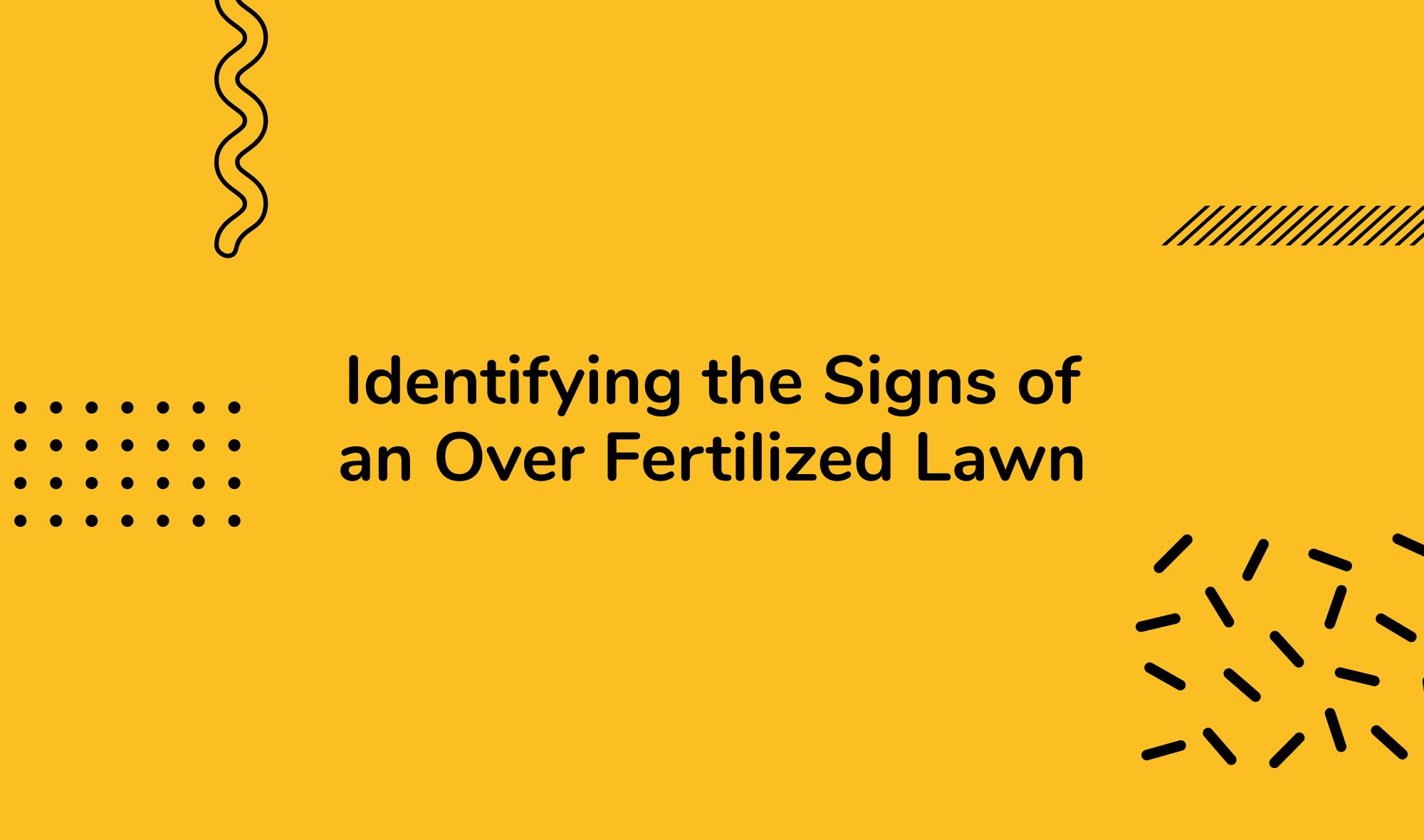
As with any problem, the first step towards rectifying over fertilization is recognizing that it's happened. An over fertilized lawn will show distinct symptoms, revealing that the grass and soil are under stress. Understanding these signs can help you take quick action, reducing the risk of long-term damage to your lawn.
Common Over Fertilization Lawn Symptoms to Look Out For
Over fertilization symptoms often appear within a few days of applying too much fertilizer. The most evident sign is a sudden change in the color of your grass. Healthy lawns usually boast a vibrant green color. However, if you've over fertilized your lawn, you may start noticing brown or yellow patches, or the tips of your grass turning brown or yellow. This discoloration is often the first sign of trouble.
Excess fertilizer can also cause your grass to grow at an unnatural pace. If you notice certain patches of grass growing significantly faster than others, it might be due to over fertilization in those areas.
Additionally, over fertilization can lead to an increased susceptibility to diseases. If your lawn is usually resilient but suddenly starts succumbing to fungal diseases or pests, it might be because the soil and grass are stressed from excess nutrients.
Fertilizer Burn: A Telltale Sign of Too Much Fertilizer
One of the most apparent signs of over fertilization is something called fertilizer burn. This occurs when the excess salts in the fertilizer draw water out of the grass and soil, causing the grass to dehydrate and die.
Fertilizer burn can be identified by the presence of brown or yellow streaks running across your lawn, especially in the pattern in which you applied the fertilizer. This symptom can appear within a day or two of over fertilizing, and if not addressed, can result in dead grass and patches of burned grass across your entire lawn.
The key to a healthy, vibrant lawn lies in maintaining the right balance of nutrients. Paying attention to these signs can help you correct your lawn care regimen before too much damage is done. In the next section, we'll explore what happens when a lawn is over fertilized and how it impacts the soil and grass.
Understanding the Consequences of Over Fertilization
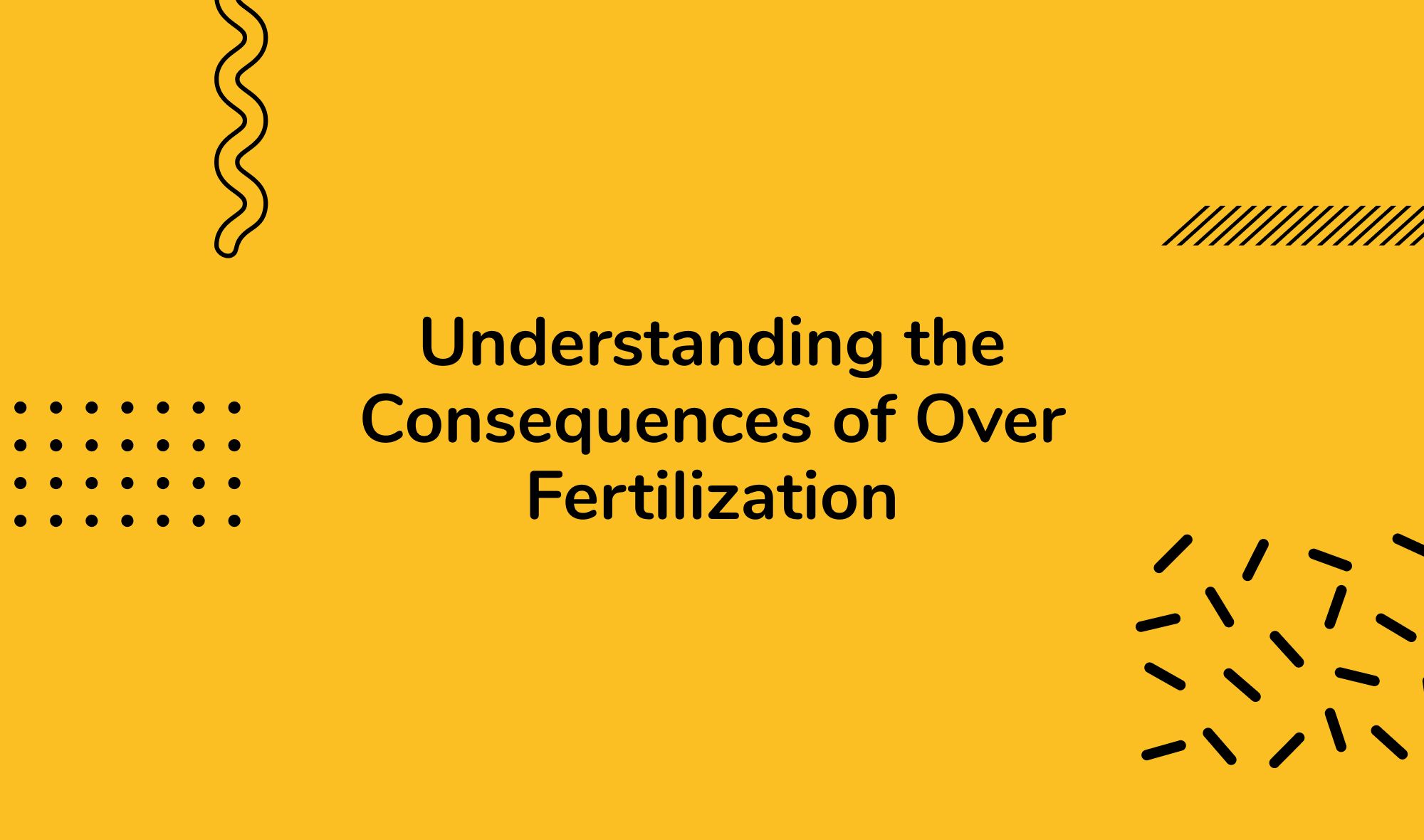
Over fertilizing your lawn can have both immediate and long-term effects, impacting not just the appearance and health of your grass, but also the soil composition and the surrounding environment. These consequences can extend beyond the boundaries of your lawn, affecting local ecosystems and even contributing to wider environmental issues.
Immediate and Long-Term Effects of an Over Fertilized Lawn
The immediate effects of over fertilizing are usually quite visible. As mentioned earlier, symptoms like brown or yellow patches, rapid or uneven grass growth, and increased susceptibility to diseases can become apparent within days. If you've accidentally spilled fertilizer or applied an extra-heavy dose, your lawn might experience a severe case of fertilizer burn, leading to dead grass and bare spots.
The long-term effects, while not immediately noticeable, can be equally, if not more, damaging. Over time, excess fertilizer can disrupt the natural balance of your soil, leading to poor drainage and making it harder for grass and other plants to absorb nutrients. This can result in stunted growth, thin grass, and an increased vulnerability to pests and diseases. Moreover, over fertilization can make the soil acidic, creating an unfavorable environment for beneficial soil organisms and potentially impacting new grass growth.
The Environmental Implications of Too Much Fertilizer
The environmental impact of over fertilization extends far beyond your lawn. Excess fertilizer can run off into local waterways, contributing to nutrient pollution. This can lead to the overgrowth of algae in bodies of water, a process known as eutrophication. Algae blooms consume large amounts of oxygen, creating "dead zones" where aquatic life can't survive.
Excess fertilizer can also seep deep into the soil and contaminate groundwater, affecting drinking water sources. Moreover, some lawn fertilizers contain chemicals that can be harmful to local wildlife and beneficial insects.
By understanding these consequences, we can appreciate the importance of using fertilizer judiciously. It's not just about keeping our lawns green and beautiful, but also about preserving our local ecosystems and the environment as a whole. In the next section, we'll look at the steps you can take if you've over fertilized your lawn, to mitigate these negative effects and restore your lawn to health.
What to Do if You Over Fertilize Your Lawn: Initial Steps

Realizing that you've over fertilized your lawn can be a moment of panic for any homeowner. But don't worry – while the effects can be severe, there are immediate steps you can take to limit the damage and begin the recovery process.
Immediate Response Strategies to Mitigate Fertilizer Burn
The moment you notice the signs of over fertilization, swift action is necessary to prevent further damage. If only a small area is affected, try to remove as much of the spilled fertilizer as possible. Use a broom or a vacuum to pick up granular fertilizers, taking care not to spread them further.
If the entire lawn is showing signs of stress due to over fertilization, your best course of action is to try to dilute the excess fertilizer present in the soil.
The Role of Water in Addressing an Over Fertilized Lawn
Water is your primary ally in the fight against over fertilization. As soon as you realize you've applied too much fertilizer, start watering your lawn thoroughly. This can help to wash away excess nutrients and salts from the grass blades and move them deeper into the soil where they'll be less likely to cause harm.
Ensure your lawn receives a deep watering over the next few days. This helps to flush the excess fertilizer out of the root zone, allowing the grass to recover. However, it's important not to overdo it as excessive watering can lead to other problems like root rot and fungal diseases.
While these steps can help mitigate the immediate effects of over fertilization, it's important to monitor your lawn closely for the next few weeks. Look out for any new or worsening symptoms, and be prepared to take additional measures if needed. In the next section, we'll delve into the longer-term strategies for fixing an over fertilized lawn.
How to Fix an Over Fertilized Lawn: Long-Term Strategies
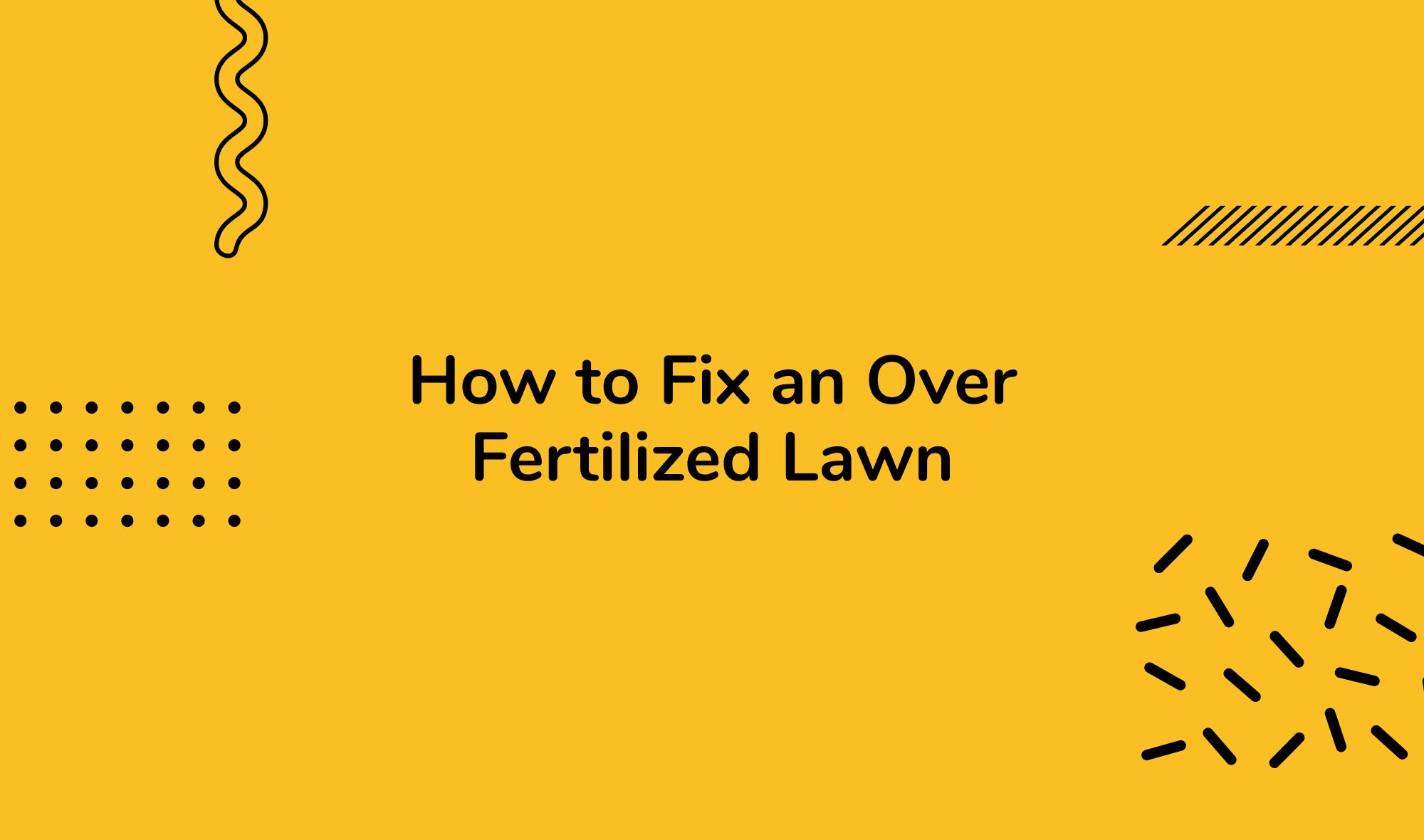
While initial response strategies can address the immediate effects of over fertilization, a long-term plan is essential for fully restoring the health of your lawn. This usually involves adjusting your fertilization routine and implementing a balanced lawn care regimen.
Regulating the Use of Granular Fertilizer Post Over Fertilization
In the aftermath of over fertilization, it's important to review your fertilizer use. If you've been using a granular fertilizer, consider switching to a liquid or slow-release fertilizer that's easier to apply in controlled amounts.
Regardless of the type of fertilizer you choose, make sure to apply it at the recommended rates. Too much fertilizer can cause problems, but so can too little. It's about finding the right balance for your specific lawn.
Implementing a Balanced Lawn Care Routine After Over Fertilization
In addition to regulating fertilizer use, a balanced lawn care routine can help your lawn recover from over fertilization and prevent future issues.
Watering your lawn properly is an important aspect of this routine. Instead of watering lightly every day, water deeply and less frequently. This encourages the roots to grow deeper, making your lawn more resilient.
Regular mowing is also crucial. However, avoid cutting your grass too short as this can stress it and make it more susceptible to diseases.
Moreover, consider testing your soil every few years. This can help you understand its specific nutrient needs and make more informed decisions about fertilization.
While over fertilization is a serious issue, it's not the end of the world. With these strategies, you can help your lawn recover and prevent future over fertilization. By understanding the needs of your lawn and adjusting your lawn care practices accordingly, you can maintain a healthy, green, and vibrant lawn year-round.
Preventing Over Fertilization: Best Practices for Using Lawn Fertilizer
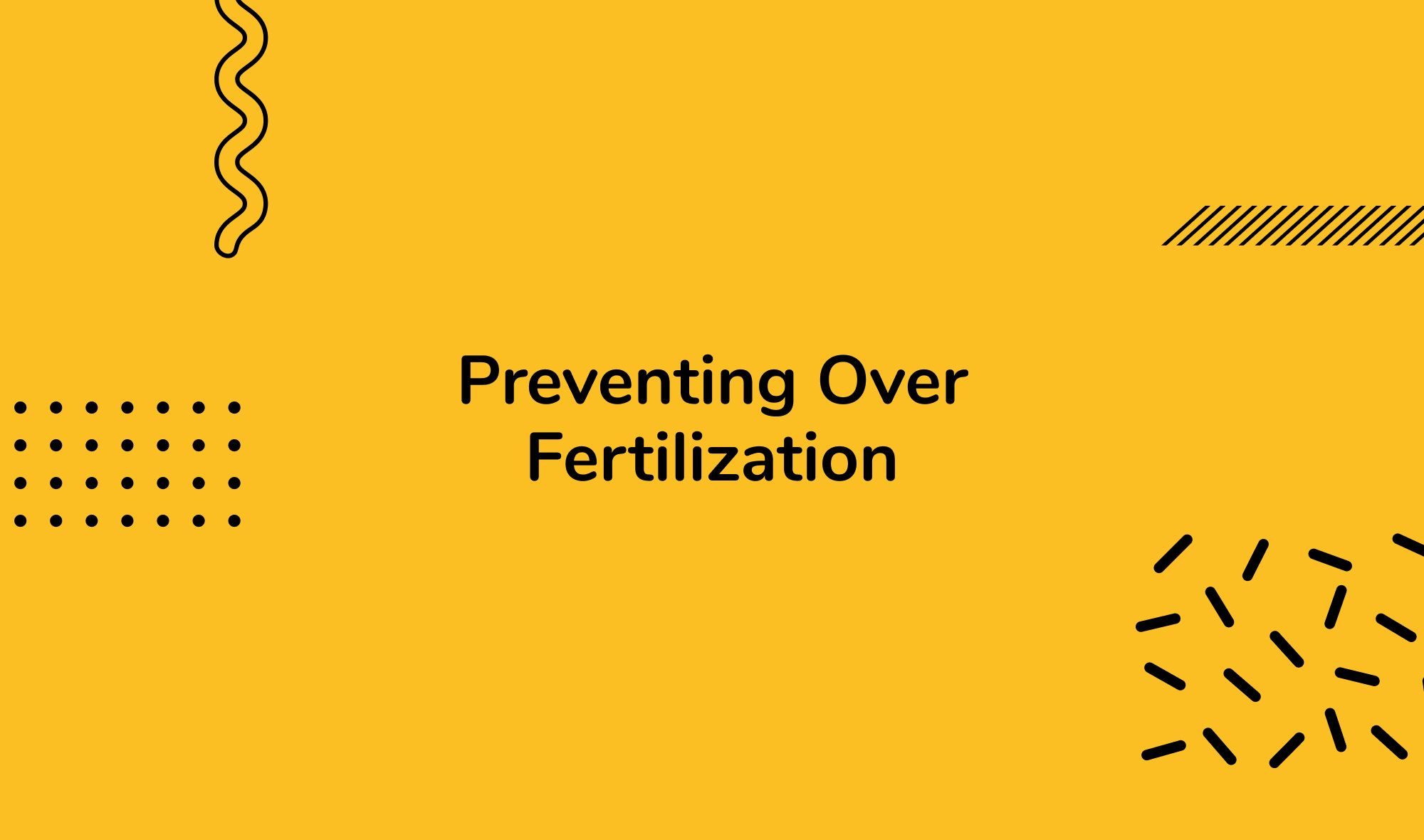
Preventing over fertilization is better than having to fix it. By using lawn fertilizer correctly and developing a thoughtful fertilization schedule, you can provide your lawn with the nutrients it needs without the risk of overdoing it.
How to Correctly Apply Granular Fertilizer to Your Lawn
If you prefer to use granular fertilizer, it's important to apply it correctly to avoid over fertilization. Always follow the manufacturer's instructions for the recommended application rate. It's generally best to apply granular fertilizers with a spreader to ensure an even distribution.
When applying the fertilizer, avoid heavy-handed or uneven applications. It's better to apply a little less than to risk applying too much. After applying the fertilizer, water your lawn to help the granules dissolve and the nutrients to penetrate the soil.
Developing a Fertilization Schedule: When and How Much?
One of the keys to avoiding over fertilization is to develop a fertilization schedule. This involves determining when to fertilize your lawn and how much fertilizer to use.
As a general rule, most lawns benefit from being fertilized once or twice a year. However, the exact timing and frequency depend on the type of grass and the local climate. Most cool-season grasses, for example, prefer to be fertilized in the fall and spring, while warm-season grasses usually prefer late spring and summer.
As for how much to use, it's best to follow the "less is more" principle. Start with the minimum recommended amount, and adjust as needed based on the health and appearance of your lawn. Soil testing can be very helpful in determining your lawn's specific nutrient needs.
With these best practices in mind, you can avoid over fertilization and keep your lawn healthy and green. Always remember: when it comes to lawn care, a little knowledge and precaution go a long way.
Conclusion: Embracing Mindful Lawn Care

In our quest to maintain vibrant and beautiful lawns, it's easy to assume that more fertilizer equals more growth. As we've discovered, however, this isn't always the case. Understanding the needs of your lawn and embracing mindful lawn care practices is key to maintaining a healthy and thriving lawn without risking the pitfalls of over fertilization.
The Importance of Understanding Your Lawn’s Needs
Every lawn is unique, with its own set of needs based on factors like soil composition, grass type, and local climate conditions. Rather than adopting a one-size-fits-all approach, take the time to understand your lawn's specific requirements. Regular soil testing can be invaluable in this regard, helping you to tailor your lawn care practices to match the unique needs of your lawn.
Key Takeaways for Maintaining a Healthy, Thriving Lawn
We've covered a lot of ground in this post, but if there's one thing to take away, it's that balance is key. Whether it's the amount of fertilizer you use, the frequency of watering, or the length of your grass, finding the right balance is crucial to maintaining a healthy lawn.
Avoid over fertilization by using fertilizer judiciously, applying it evenly, and adjusting your use based on your lawn's needs. In case of over fertilization, take immediate action to mitigate the effects, followed by long-term strategies to restore your lawn's health.
At the end of the day, maintaining a thriving lawn is about more than just aesthetics. It's about nurturing a small piece of our planet, contributing to local biodiversity, and promoting a healthier environment for all. So, let's embrace mindful lawn care, for the love of our lawns and our planet.
Join our newsletter
Stay ahead of the curve in all things outdoor.
Get the inside scoop on the latest landscaping, lawn care, and fencing trends with 1 actionable tip every Saturday morning.